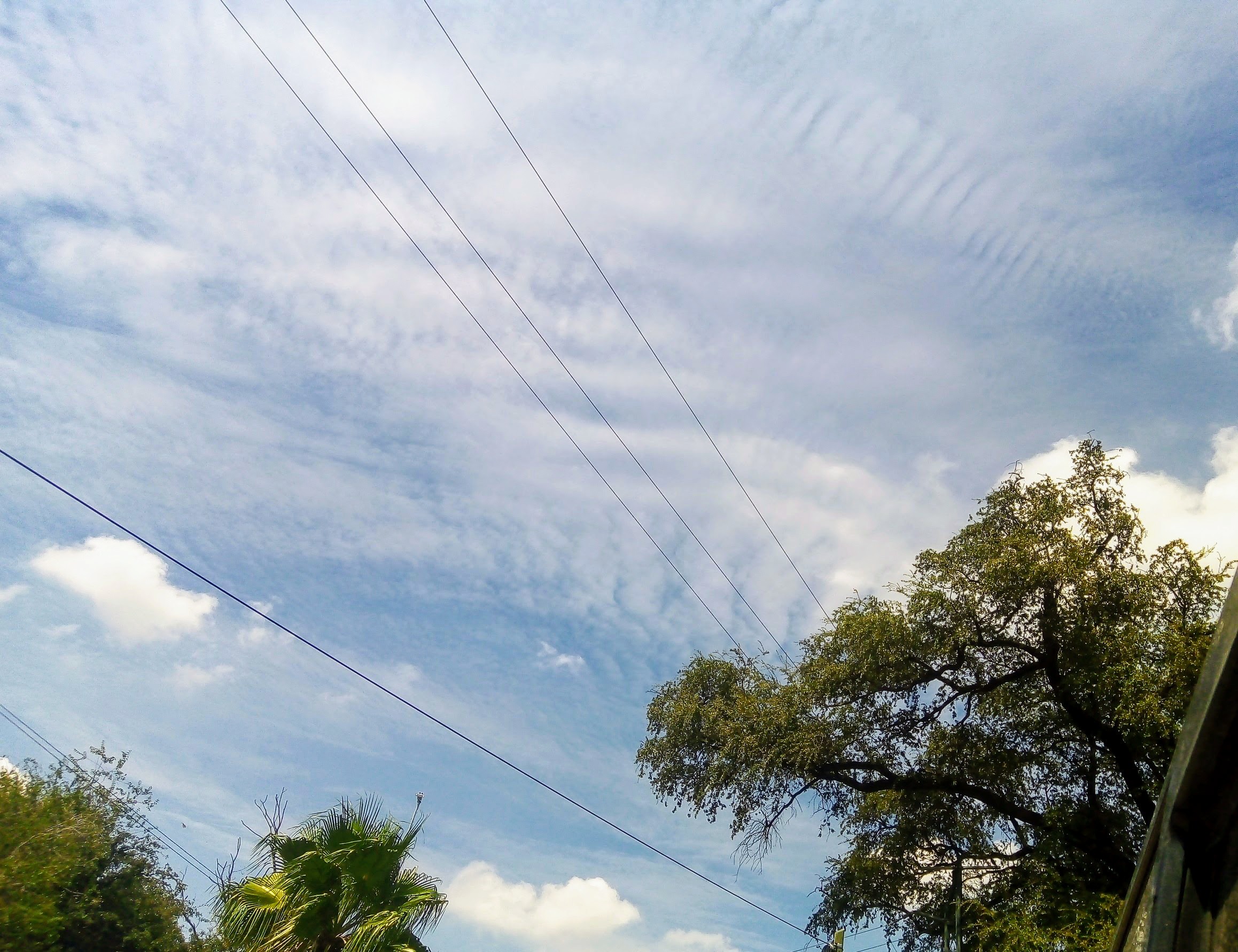wave cloud on:
[Wikipedia]
[Google]
[Amazon]
A wave cloud is a 

cloud
In meteorology, a cloud is an aerosol consisting of a visible mass of miniature liquid droplets, frozen crystals, or other particles suspended in the atmosphere of a planetary body or similar space. Water or various other chemicals may ...
form created by atmospheric internal wave
Internal waves are gravity waves that oscillate within a fluid medium, rather than on its surface. To exist, the fluid must be stratified: the density must change (continuously or discontinuously) with depth/height due to changes, for example, in ...
s.


Formation
The atmosphericinternal wave
Internal waves are gravity waves that oscillate within a fluid medium, rather than on its surface. To exist, the fluid must be stratified: the density must change (continuously or discontinuously) with depth/height due to changes, for example, in ...
s that form wave clouds are created as stable air flows over a raised land feature such as a mountain range
A mountain range or hill range is a series of mountains or hills arranged in a line and connected by high ground. A mountain system or mountain belt is a group of mountain ranges with similarity in form, structure, and alignment that have arise ...
, and can form either directly above or in the lee of the feature. As an air mass travels through the wave, it undergoes repeated uplift and descent. If there is enough moisture in the atmosphere, clouds will form at the cooled crests of these waves. In the descending part of the wave, those clouds will evaporate due to adiabatic heating, leading to the characteristic clouded and clear bands. The cloud base on the leeward side is higher than on the windward side, because precipitation on the windward side removes water from the air.Wallace, John M., Hobbs, Peter V. Atmospheric Science, and Introductory Survey. San Diego, CA: Academic Press, 1977.
It is possible that simple convection
Convection is single or multiphase fluid flow that occurs spontaneously due to the combined effects of material property heterogeneity and body forces on a fluid, most commonly density and gravity (see buoyancy). When the cause of the conve ...
from mountain summits can also form wave clouds. This occurs as the convection forces a wave or lenticular wave cloud into the more stable air above.Worthington, R. M. "Lenticular wave cloud above the convective boundary layer of the Rocky Mountains," Weather 57(2002):87–90.
Importance
Climate modeling
Wave clouds are typically mid- to upper-tropospheric ice clouds. They are relatively easy to study, because they are quite consistent. As a result, they are being analyzed to increase our understanding of how these upper-level ice clouds influence the Earth's radiation budget. Understanding this can improve climate models.Baker, B. A., Lawson, R. P. (2006) In Situ Observations of the Microphysical Properties of Wave, Cirrus, and Anvil Clouds. Wave clouds got their name because they look like waves. Part I: Wave Clouds. Journal of the Atmospheric Sciences: Vol. 63, No. 12 pp. 3160–3185Recreation
The streamlines in these clouds have the steepest slope a few kilometers downwind of the lee slope of a mountain. It is in these regions of highest vertical velocity thatsailplanes
A glider or sailplane is a type of glider aircraft used in the leisure activity and sport of gliding (also called soaring). This unpowered aircraft can use naturally occurring currents of rising air in the atmosphere to gain altitude. Sailplan ...
can reach record-breaking altitudes.
Structure
In an ideal model, a wave cloud consists of supercooled liquid water at the lower part, a mixed phase of frozen and liquid water near the ridge, and ice beginning slightly below the ridge and extending downstream. However, this doesn't always occur. Wave cloud structure ranges from smooth and simple, to jumbled phases occurring randomly. Often, ice crystals can be found downwind of the waves. Whether this happens depends on the saturation of the air. The composition of the ice is currently an active topic of study. The main mechanism for ice formation is homogeneous nucleation. The ice crystals are mostly small spheroidal and irregular-shaped particles. Ice columns make up less than 1%, and plates are virtually nonexistent. Multi-level mountain wave clouds form when the moisture in the air above the mountain is located in distinct layers, and vertical mixing is inhibited.See also
*Lee waves
In meteorology, lee waves are atmospheric stationary waves. The most common form is mountain waves, which are atmospheric internal gravity waves. These were discovered in 1933 by two German glider pilots, Hans Deutschmann and Wolf Hirth, above ...
* Orographic lift
Orographic lift occurs when an air mass is forced from a low elevation to a higher elevation as it moves over rising terrain. As the air mass gains altitude it quickly cools down adiabatically, which can raise the relative humidity to 100% and cr ...
* Horizontal convective rolls
References
{{reflist Cumulus Cloud types Atmospheric dynamics Mountain meteorology Mesoscale meteorology